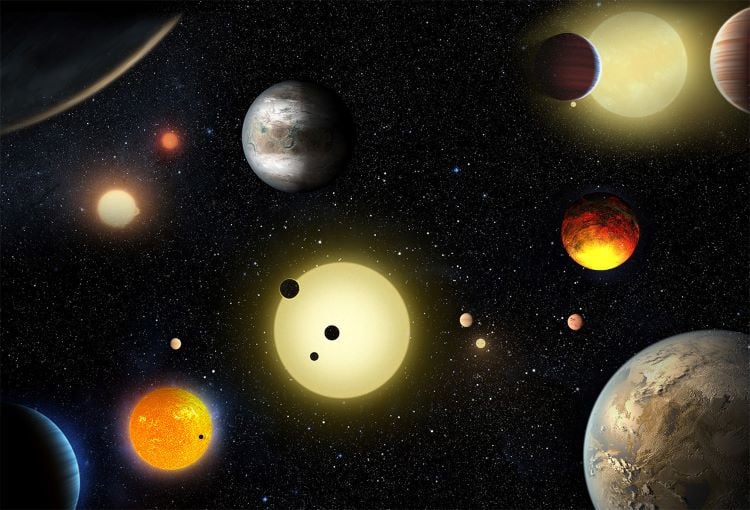The extrasolar planet census recently passed a major milestone, with 5500 confirmed candidates in 4,243 solar systems. With so many exoplanets available for study, astronomers have learned a great deal about the types of planets that exist in our galaxy and have been rethinking several preconceived notions. These include the notion of "habitability" and whether Earth is the standard by which this should be measured - i.e., could there be "super habitable" exoplanets out there? - and the very concept of the circumsolar habitable zone (CHZ).
Traditionally, astronomers have defined habitable zones based on the type of star and the orbital distance where a planet would be warm enough to maintain liquid water on its surface. But in recent years, other factors have been considered, including the presence of planetary magnetic fields and whether they get enough ultraviolet light. In a recent study, a team from Rice University extended the definition of a CHZ to include a star’s magnetic field. Their findings could have significant implications in the search for life on other planets (aka. astrobiology).
The research team consisted of Anthony S. Atkinson, a graduate student with the Department of Physics and Astronomy at Rice University, Professor David Alexander, the director of the Rice Space Institute and member of the Texas Aerospace Research and Space Economy Consortium, and Alison O. Farrish, a NASA Postdoctoral Program Fellow at NASA's Goddard Space Flight Center. The paper describing their findings, " Exploring the Effects of Stellar Magnetism on the Potential Habitability of Exoplanets," appeared on July 9th in The Astrophysical Journal.
On Earth, the presence of an intrinsic magnetic field has been vital to the emergence and evolution of life as we know it. Without it, our atmosphere would have been stripped away long ago by energetic particles emanating from the Sun - which was the case with Mars. In addition to Earth's atmosphere, our planet's magnetic field ensures that a limited amount of solar radiation and cosmic rays reach the surface. For this reason, astrobiologists consider a planetary magnetic field essential for determining whether or not an exoplanet is habitable.
Another factor is how the strength of a planet's magnetic field and its interaction with its parent star's magnetic field affect habitability. Not only does an exoplanet require a strong field to shield it against stellar activity (solar flares, etc.), but it must also orbit far enough to avoid a direct magnetic connection with its star. "The fascination with exoplanets stems from our desire to understand our own planet better," said Prof. Alexander in a recent Rice University press statement. "Questions about the Earth's formation and habitability are the key drivers behind our study of these distant worlds."
The magnetic interactions between planets and their parent stars are known as "space weather." For their study, the team examined 1,546 exoplanets to determine if they orbited inside or outside their host star's Alfvén radius - the distance where stellar wind decouples from the star. This consisted of characterizing the stars' activity known using their Rossby number (Ro) - the ratio between a star's rotational period to their convective turnover time.
Planets orbiting within this radius would directly interact magnetically with the star's corona, leading to significant atmospheric stripping, ruling them out as viable candidates for habitability. This phenomenon has been observed with TRAPPIST-1 and its system of seven exoplanets. After examining the exoplanets in their study, they found that only two planets met all the conditions for potential habitability. These were K2-3 d and Kepler-186 f, two Earth-sized exoplanets 144 and 579 light-years from Earth (respectively).
These planets orbit within their stars' CHZ, lie outside their Alfvén radius, and have strong enough magnetic fields to protect them from stellar activity. "While these conditions are necessary for a planet to host life, they do not guarantee it," said Atkinson. "Our work highlights the importance of considering a wide range of factors when searching for habitable planets."
These findings highlight the need for continuous observation when studying exoplanet systems and considering what factors have led to the emergence of life here on Earth. They are also indicative of current efforts among astronomers and astrobiologists to refine the definition of "Habitable Zone" and create a more nuanced understanding. In so doing, this research could help refine the search for extraterrestrial life by allowing scientists to further constrain where they should be looking.
Further Reading: Rice University, *The Astrophysical Journal*
 Universe Today
Universe Today


